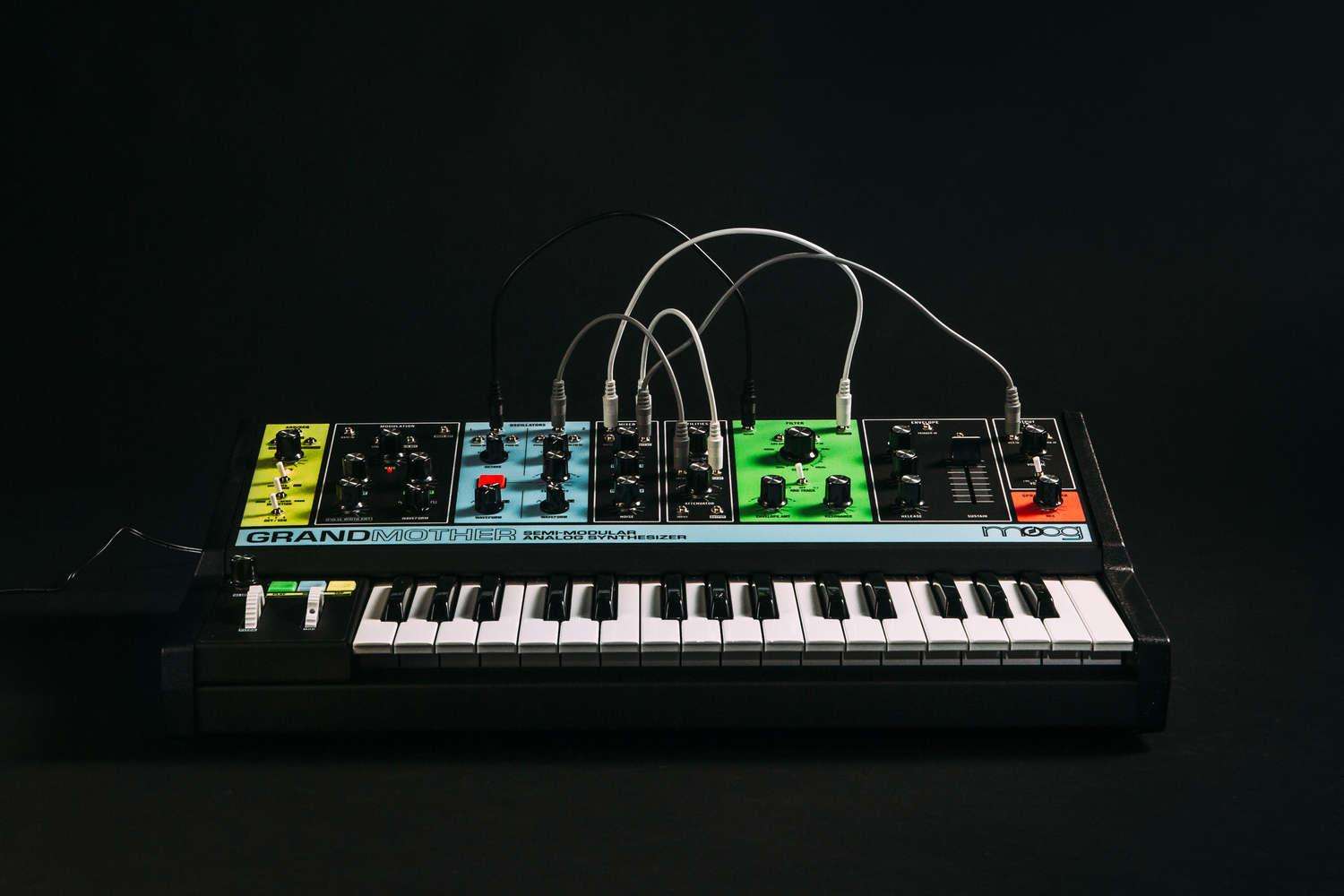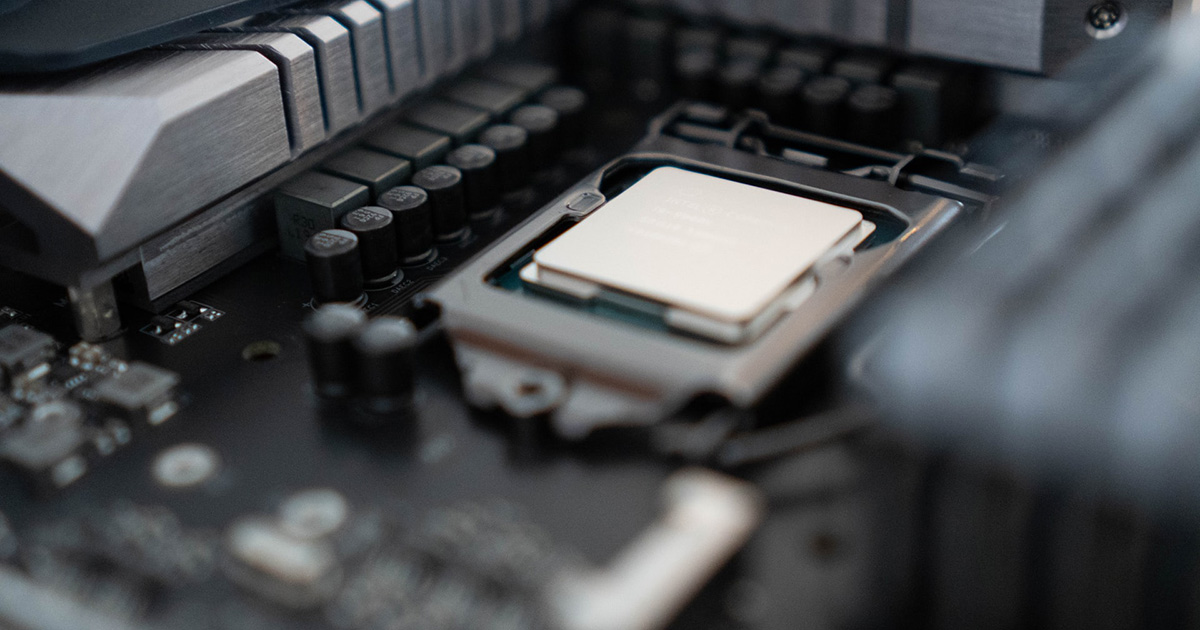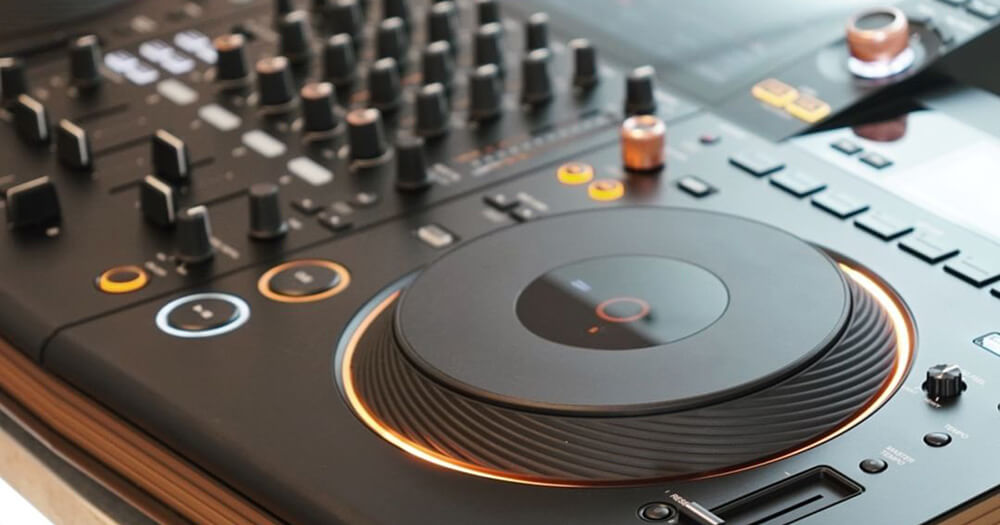Synthesizers have been an integral part of music production for decades, offering a wide range of sounds and the ability to create everything from classic analog bass and lead tones to more experimental, modulated sounds.
With so many synthesizers on the market, it can be tough to know which one is right for your music production setup.
In this article, we will take a look at some of the best synthesizers for music production, covering a range of options from classic analog synths to modern digital models.
Whether you’re a seasoned electronic musician or just starting out in the world of synthesizers, we’ve got you covered with our top picks.
So, let’s dive in and explore some of the best synthesizers for music production available today.
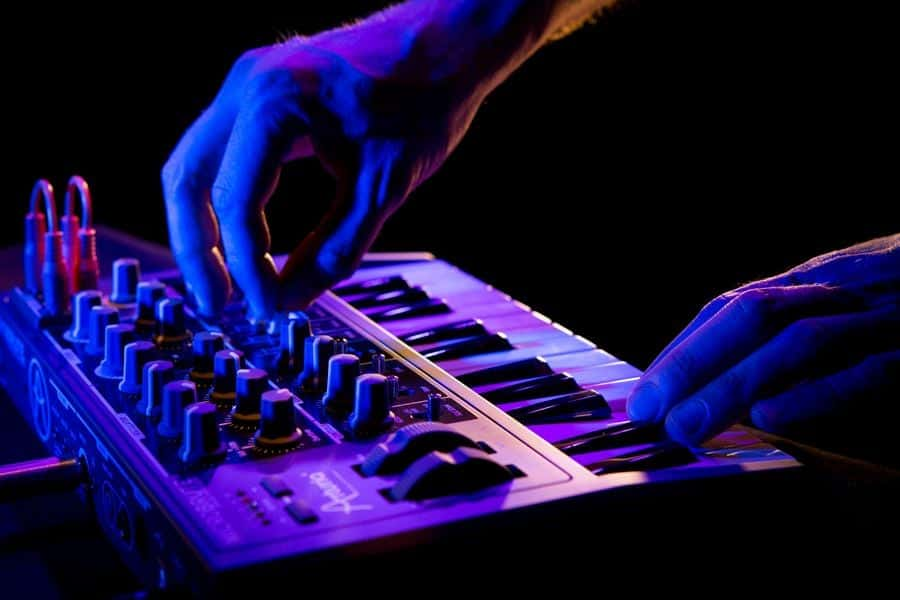
Arturia MicroBrute
The Arturia MicroBrute is a compact, monophonic analog synthesizer released in 2012. It features a single oscillator with three waveform options (sawtooth, triangle, and square/pulse) and a sub oscillator, as well as a multi-waveform LFO and a white noise generator.
The MicroBrute also has a Steiner-Parker filter, a step sequencer, and a number of modulation options, including an envelope generator and a modulation matrix.
One of the standout features of the MicroBrute is its Brute Factor control, which allows users to add a range of harmonically rich distortion to the sound.
The synthesizer also has a number of patch points for external modulation and a built-in mini-keyboard for playing melodies.
Shop the Arturia MicroBrute on Amazon
Korg Monologue
The Korg Monologue is a compact, monophonic analog synthesizer released in 2016. It features two oscillators, each with a range of waveform options including sawtooth, triangle, and square/pulse waves, as well as a sub oscillator.
The Monologue also has a multi-mode filter, an envelope generator, a LFO, and a number of modulation options, including a step sequencer and a modulation matrix.
One of the standout features of the Monologue is its Voice Mode, which allows users to select from five different synthesizer architectures, including a classic analog mode, a mode with additional modulation options, and a mode with a sub oscillator and ring modulation.
The synthesizer also has a number of patch points for external modulation and a built-in mini-keyboard for playing melodies.
Shop the Korg Monologue on Amazon or Guitar Center
Arturia MiniBrute 2
The Arturia MiniBrute 2 is a monophonic analog synthesizer released in 2017. It features two oscillators, each with a range of waveform options including sawtooth, triangle, and square/pulse waves, as well as a sub oscillator and a white noise generator.
The MiniBrute 2 also has a multi-mode filter, an envelope generator, a LFO, and a number of modulation options, including a step sequencer and a modulation matrix.
One of the standout features of the MiniBrute 2 is its Brute Factor control, which allows users to add a range of harmonically rich distortion to the sound.
The synthesizer also has a number of patch points for external modulation and a built-in keyboard for playing melodies.
Shop the Arturia MiniBrute 2 on Amazon or Guitar Center
Korg Minilogue XD
The Korg Minilogue XD is a polyphonic analog synthesizer released in 2018. It features four oscillators, each with a range of waveform options including sawtooth, triangle, and square/pulse waves, as well as a sub oscillator and a noise generator.
The Minilogue XD also has a multi-mode filter, two envelope generators, two LFOs, and a number of modulation options, including a step sequencer and a modulation matrix.
One of the standout features of the Minilogue XD is its digital multi-engine, which allows users to select from a range of digital oscillator algorithms and effects, including wavetables and noise-based algorithms.
The synthesizer also has a number of patch points for external modulation and a built-in keyboard for playing melodies
Shop the Korg Minilogue XD on Amazon or Guitar Center
Korg MS-20 Mini
The Korg MS-20 Mini is a reissue of the classic Korg MS-20 analog synthesizer, released in 2013. The MS-20 Mini is a monophonic synthesizer with two voltage-controlled oscillators, each with a range of waveform options including sawtooth, triangle, and square/pulse waves, as well as a sub oscillator.
It also has a voltage-controlled filter, an envelope generator, a LFO, and a number of modulation options, including a patch bay for external modulation and a built-in keyboard for playing melodies.
One of the standout features of the MS-20 Mini is its patch bay, which allows users to patch together various components of the synthesizer in different configurations for a wide range of sounds.
The MS-20 Mini is known for its raw, powerful sound and is popular among electronic musicians and synthesizer enthusiasts for its classic analog character and versatility.
It can be used to create a wide range of sounds, from classic analog bass and lead tones to more experimental, modulated sounds.
Shop the Korg MS-20 Mini on Amazon or Guitar Center
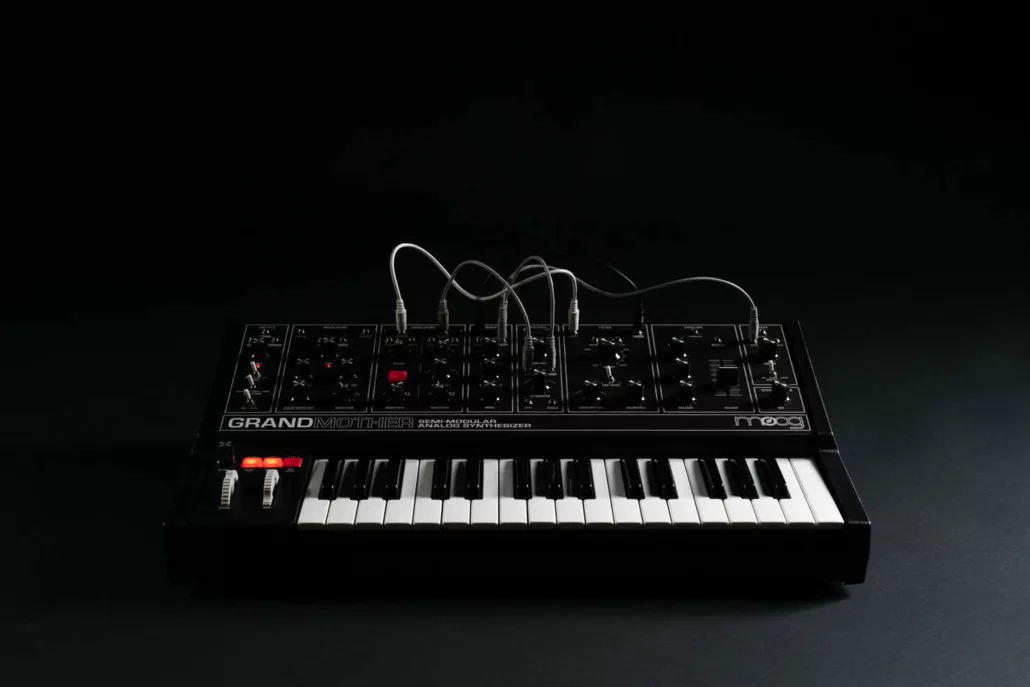
Moog Grandmother
The first Moog synthesizer was the Moog Model 3, also known as the Moog Modular synthesizer. It was developed by Robert Moog in the 1960s and was one of the first modular synthesizers on the market.
The Moog Grandmother is a semi-modular analog synthesizer released in 2018. It features a single oscillator with a range of waveform options including sawtooth, triangle, and square/pulse waves, as well as a sub oscillator.
The Grandmother also has a Moog ladder filter, an envelope generator, a LFO, and a number of modulation options, including a built-in sequencer and a patch bay for external modulation.
One of the standout features of the Grandmother is its semi-modular design, which allows users to patch together various components of the synthesizer in different configurations for a wide range of sounds.
The Grandmother also has a number of built-in keyboard sounds, including electric pianos and organs, and features a built-in spring reverb effect.
Shop the Moog Grandmother on Amazon or Guitar Center
Nord Lead 4
The Nord Lead 4 is a polyphonic synthesizer released by Nord in 2015. It features four virtual analog oscillators, each with a range of waveform options including sawtooth, triangle, and square/pulse waves, as well as a sub oscillator and a noise generator.
The Nord Lead 4 also has a multi-mode filter, two envelope generators, two LFOs, and a number of modulation options, including a step sequencer and a modulation matrix.
One of the standout features of the Nord Lead 4 is its oscillator sync and ring modulation capabilities, which allow users to create complex, harmonically rich sounds.
The synthesizer also has a number of patch points for external modulation and a built-in keyboard for playing melodies.
Shop the Nord Lead 4 on Amazon
Roland TB-303
The Roland TB-303 (short for Transistor Bass) is a monophonic analog synthesizer released in 1981. It was originally intended to be a bass synthesizer for use with Roland’s TR-606 drum machine, but it gained widespread popularity in the early 1980s as a key instrument in the development of the acid house music genre.
The TB-303 features a single oscillator with a sawtooth waveform and a voltage-controlled filter, as well as an envelope generator and a simple sequencer for creating patterns.
It is known for its distinctive, acidic sound, which is created by the interaction between the filter and the envelope generator.
The TB-303 has a simple interface and is not particularly flexible in terms of sound design, but it has become a highly sought-after synthesizer for its role in the development of goa trance and acid house music.
Shop the Roland TB-303 on Amazon
Roland JP-8080
The Roland JP-8080 is a virtual analog synthesizer released in 2002. It features two oscillators, each with a range of waveform options including sawtooth, triangle, and square/pulse waves, as well as a sub oscillator and a noise generator.
The JP-8080 also has a multi-mode filter, two envelope generators, two LFOs, and a number of modulation options, including a step sequencer and a modulation matrix.
One of the standout features of the JP-8080 is its Super Saw oscillator, which allows users to create rich, complex waveforms by layering multiple sawtooth waves.
The synthesizer also has a number of patch points for external modulation and a built-in keyboard for playing melodies.
FAQ
Korg Monologue vs Minilogue
The Korg Monologue and Minilogue are both monophonic synthesizers that were produced by Korg. Here are some key differences between the two:
Sound engine: The Monologue uses an analog sound engine, while the Minilogue uses a hybrid analog/digital sound engine. This means that the Monologue generates sound using analog circuits, while the Minilogue uses a combination of analog and digital components.
Oscillators: The Monologue has two oscillators, while the Minilogue has four. Oscillators are the building blocks of synthesizers, and they are used to create waveforms that form the basis of the sound. Having more oscillators allows for more complex sounds to be created.
Keyboard: The Monologue has a 25-key keyboard, while the Minilogue has a 37-key keyboard. This means that the Minilogue has a larger range and can play more notes at once.
Polyphony: The Monologue is monophonic, meaning it can only play one note at a time. The Minilogue is paraphonic, meaning it can play multiple notes at once, but each oscillator can only play one note at a time.
Effects: The Monologue has a built-in effect processor that allows you to add effects such as delay and reverb to your sound. The Minilogue does not have this feature.
Overall, the Korg Monologue and Minilogue are both powerful synthesizers that offer a wide range of sound-design capabilities. The main differences between the two are the sound engine, number of oscillators, keyboard size, and polyphony.
Arturia MiniBrute 2 vs MicroBrute
The Arturia MiniBrute 2 and the MicroBrute are both analog synthesizers that offer a range of features for creating electronic music. However, there are some key differences between the two.
The MiniBrute 2 is a full-size synthesizer that has a 37-note keyboard and a number of features for sound design and modulation. It has a dual oscillator design with waveform mixing, a sub oscillator, and a white noise generator. It also has a multi-mode filter with 12dB and 24dB slope options, as well as an overdrive circuit. The MiniBrute 2 also has a number of modulation options, including an LFO, envelope generators, and a sequencer.
The MicroBrute, on the other hand, is a smaller, more compact synthesizer with a 25-note keyboard. It has a single oscillator with waveform mixing and a sub oscillator, as well as a multi-mode filter with 12dB and 24dB slope options. It also has an LFO and envelope generators, but does not have a sequencer like the MiniBrute 2.
Overall, the MiniBrute 2 offers more features and a larger keyboard than the MicroBrute, making it a more powerful and flexible synthesizer for sound design. However, the MicroBrute is a more portable and affordable option for those who don't need as many features.
MiniBrute 2 vs Minilogue XD
The Arturia MiniBrute 2 and the Korg Minilogue XD are both synthesizers that offer a wide range of sound-design capabilities. Here are some key differences between the two:
Sound engine: The MiniBrute 2 uses an analog sound engine, while the Minilogue XD uses a hybrid analog/digital sound engine. This means that the MiniBrute 2 generates sound using analog circuits, while the Minilogue XD uses a combination of analog and digital components.
Oscillators: The MiniBrute 2 has two oscillators, while the Minilogue XD has four. Oscillators are the building blocks of synthesizers, and they are used to create waveforms that form the basis of the sound. Having more oscillators allows for more complex sounds to be created.
Keyboard: The MiniBrute 2 has a 25-key keyboard, while the Minilogue XD has a 37-key keyboard. This means that the Minilogue XD has a larger range and can play more notes at once.
Polyphony: The MiniBrute 2 is monophonic, meaning it can only play one note at a time. The Minilogue XD is paraphonic, meaning it can play multiple notes at once, but each oscillator can only play one note at a time.
Effects: The MiniBrute 2 has a built-in effect processor that allows you to add effects such as delay and reverb to your sound. The Minilogue XD has a number of built-in effects, including delay, reverb, and modulation effects.
Overall, the Arturia MiniBrute 2 and the Korg Minilogue XD are both powerful synthesizers that offer a wide range of sound-design capabilities. The main differences between the two are the sound engine, number of oscillators, keyboard size, and the availability of built-in effects.
